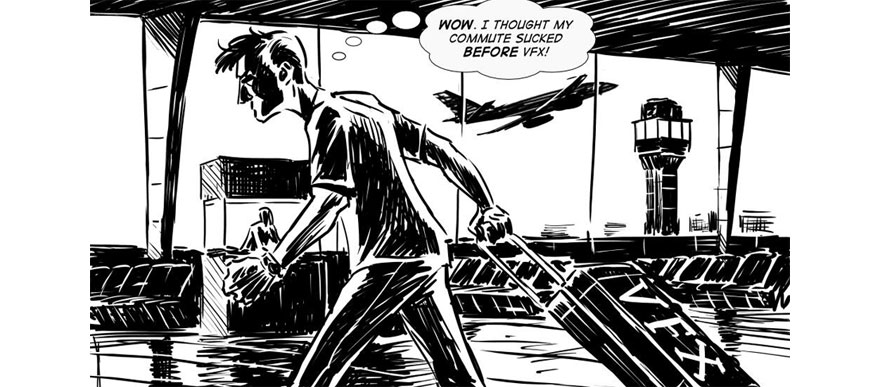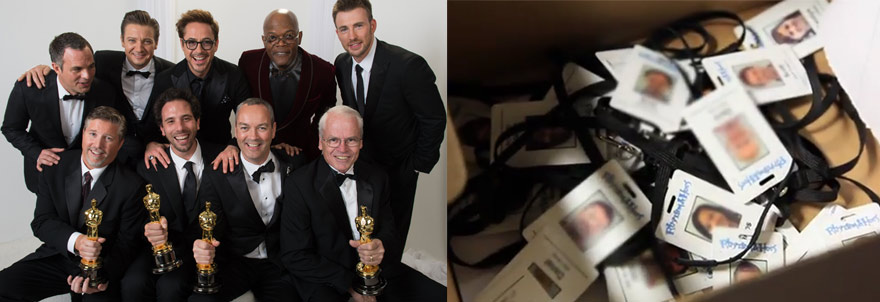By Kristy Barkan
VFX giant Rhythm & Hues had been in business for 25 years when the company suddenly folded on February 11, 2013, filing bankruptcy proceedings and immediately laying off hundreds of employees. The studio’s collapse came at a highly improbable time: Rhythm & Hues had recently completed work on Ang Lee’s “Life of Pi,” a vfx-driven film that ultimately grossed more than $611 million worldwide. Remarkably, little more than a week after filing Chapter 11, the bankrupt VFX studio was awarded one of the highest honors in entertainment: the Academy Award for Best Visual Effects.
Though the bankruptcy of a VFX titan like Rhythm & Hues may be surprising to industry outsiders, it’s not an errant footnote in the history of visual effects. According to the documentary “Life After Pi,” which chronicles the downfall of R&H, between 2003 and 2013, a total of 21 major VFX studios either closed or filed for bankruptcy. Danish financial research firm Eksperten’s Lån Penge study took a look at the number of
Senior FX Artist Dave Rand was part of the “Life of Pi” team at R&H, and has experienced the industry turmoil firsthand: “I’ve been on staff at five visual effects shops that were really well known, did amazing work — and all went bankrupt. Most of them owing artists money,” he said in an interview for “Life After Pi.”
According to financial statistics published by Norwegian financial research firm Låne Penger, every one of the 50 highest-grossing films of all time heavily employ visual effects. Of those, 44 are either fully animated or contain enough visual effects shots that they would be completely different movies without them.
At a time when the role of visual effects is increasingly pivotal to box office success, VFX companies are apparently finding it difficult to stay solvent. In an interview for “Life After Pi,” Lighting Supervisor Jack Fulmer claimed that creating visual effects is no longer a for-profit enterprise: “Nobody’s doing this for the money anymore. Maybe they were at some point, but they’re not anymore,” he said.
Visual effects artists and vendors generally agree that something needs to change in the VFX industry, but there is dissension as to what.
Scott Ross, former General Manager of Industrial Light & Magic and Co-Founder of Digital Domain, pointed the finger at tax incentives which lure productions from country to country and state to state in search of tax rebates. “Tax credits and subsidies are the most detrimental issue facing the VFX industry by far,” he told ACM SIGGRAPH.
Prashant Buyyala, former Managing Director of Rhythm & Hues India, seemed to agree with Ross in an interview for “Life After Pi:” “We’ve had to chase a price point that has been dropping very rapidly,” he said. “And one of the fundamental reasons is tax subsidies. If a studio decides there’s a $10 million project they want to take to [a region offering tax subsidies for visual effects work], the [local VFX company] will bid it at $10 million, but the studio gets, say, $3 million back as a tax rebate. So the only way to even get considered for that film is to bid it at $7 million. So we’re now getting less money for the same amount of work.”
Opponents of entertainment tax subsidies point out that an unequal bidding environment isn’t the only downside to incentives. Though entertainment tax programs are intended to encourage local job growth, the VFX artists and crew members who work on tax-subsidized productions are often transplants from other parts of the country or world who set up temporary residence for the duration of the job and then leave.

Copyright © 2014 Jesse Mesa Toves
Tax incentives are such a hot issue in the visual effects industry that in 2013, a protest was staged outside the Academy Awards. Hundreds of VFX artists and their families marched with bright green signs bearing handwritten messages such as “End the subsidies war!” and “Mom, do we have to move again?”
This year, another VFX rally is planned for Oscar Sunday, just a stone’s throw away from the awards ceremony. Led by visual effects artist Daniel Lay, the rally is engineered to draw attention to tax incentives. “For businesses, tax subsidies completely distort the price of VFX,” Lay told ACM SIGGRAPH. “For the artists, it’s caused a constant cycle of displacement which is harmful for those who intend to have long-term careers in the industry.”
Not everyone in the visual effects industry is opposed to tax incentives, however. In early 2013, Visual Effects Society Executive Director Eric Roth called on the California VFX community to urge local lawmakers to increase tax incentives in the state. According to the open letter published on the VES website, the “call to action,” was intended to encourage California to remain competitive with other VFX-producing regions, and hopefully retain some visual effects jobs in the state.
While some argue that subsidies exacerbate the wounds of an already unstable industry, others like the idea of having more options when it comes to where they live and work. Digital artist and outdoorsman Paul Herrin is one such individual: “After graduating from art school,” he said, “I saw all my friends moving to Los Angeles and New York and other places I wasn’t very interested in being. I like peace and quiet and fresh air.”
Tax subsidies isn’t the only issue plaguing the VFX industry. The fixed-bid system, where VFX vendors bid for jobs based on the number of shots — with no allowances for additional hours that may be required for changes, can eat into the already-thin profit margins of VFX contracts. Rhythm & Hues founder John Hughes remarked on the absurdity of the system in “Life After Pi:” “Studios would not permit a director to shoot for a week or two on set, and then say — ‘Eh, tear down this set and build a new set.'”
Prashant Buyyala provided some insight into the studio position on the fixed-bid system in his “Life After Pi” interview: “If suddenly we have to work for 3 or more months, from the studio’s perspective, they have paid us X dollars for X shots. There is no other source of revenue.”
Some VFX companies have also expressed concern about the lack of director involvement in the visual effects process, which can compound the problems posed by the fixed-bid system. Without a decision maker on hand to provide guidance on the progress of VFX shots, valuable time and energy can be wasted on work that ultimately has to be changed or chucked out entirely. Visual effects artist Dave Rand explained in “Life After Pi:” “When you’re doing these huge fluid dynamics simulations like we did on ‘Life of Pi’ — and they want to change this wave from going that way to this way, or make the rain move completely differently, that’s a lot of simulation time just to make the change. And then finally it gets shown to the client who says something like ‘Why is it even raining in this shot? It’s not supposed to be raining in this shot.”

Still from “Life of Pi,” Copyright © 20th Century Fox
At the 2013 VES Summit, Scott Ross brought up another important issue that may be hampering the financial success of visual effects companies: the absence of back-end participation. Meaning, if a VFX shop is contracted to provide 500 shots for $10 million and the movie makes $800 million, the VFX shop won’t share in that profit — even if visual effects are a critical component of the film’s success.
During a panel at the Summit, Ross asked Chris DeFaria, President of Digital Production, Animation and VFX at Warner Brothers, why this is the case: “If you look at a movie like ‘Gravity,” said Ross, “there are six producers, 20 people above the line, 175 people below the line and 530 people in visual effects. I think you would agree that the movie couldn’t have been made were it not for the work done in visual effects and animation.”
DeFaria’s response: “Backend participation is not a reward. I wish it was. It is a negotiated position, and people negotiate their positions based on the strength of what they have.”
The issues that haunt the visual effects industry are more than just academic for those whose livelihoods depend on its health and stability. In response to the recent flurry of bankruptcies and job losses, a number of initiatives have sprung up: artists and other VFX professionals have begun to organize movements toward unionization and the formation of a VFX trade association. There is even a grassroots legal campaign aimed at making VFX subsidies illegal. Though the problems in the VFX industry are far from over, one thing is for sure: visual effects have never been more in demand than they are today — and where there’s demand, there’s hope.
Have something to say about this article? Join the conversation on ACM SIGGRAPH’s Facebook page
